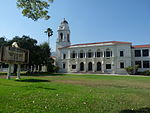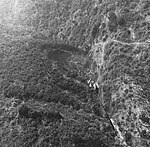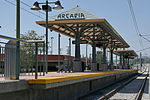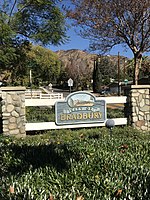The Oaks (Monrovia, California)
Houses completed in 1885Houses in Los Angeles County, CaliforniaHouses on the National Register of Historic Places in CaliforniaLos Angeles County, California Registered Historic Place stubsMonrovia, California ... and 3 more
National Register of Historic Places in Los AngelesQueen Anne architecture in CaliforniaStick-Eastlake architecture in California

The Oaks, also known as William N. Monroe House, is a Stick/Eastlake Queen Anne Style house that was built in 1885. It is located in the San Gabriel Valley, in Monrovia, California.
Excerpt from the Wikipedia article The Oaks (Monrovia, California) (License: CC BY-SA 3.0, Authors, Images).The Oaks (Monrovia, California)
North Primrose Avenue,
Geographical coordinates (GPS) Address Nearby Places Show on map
Geographical coordinates (GPS)
| Latitude | Longitude |
|---|---|
| N 34.156083333333 ° | E -118.00297222222 ° |
Address
North Primrose Avenue 258
91016
California, United States
Open on Google Maps









